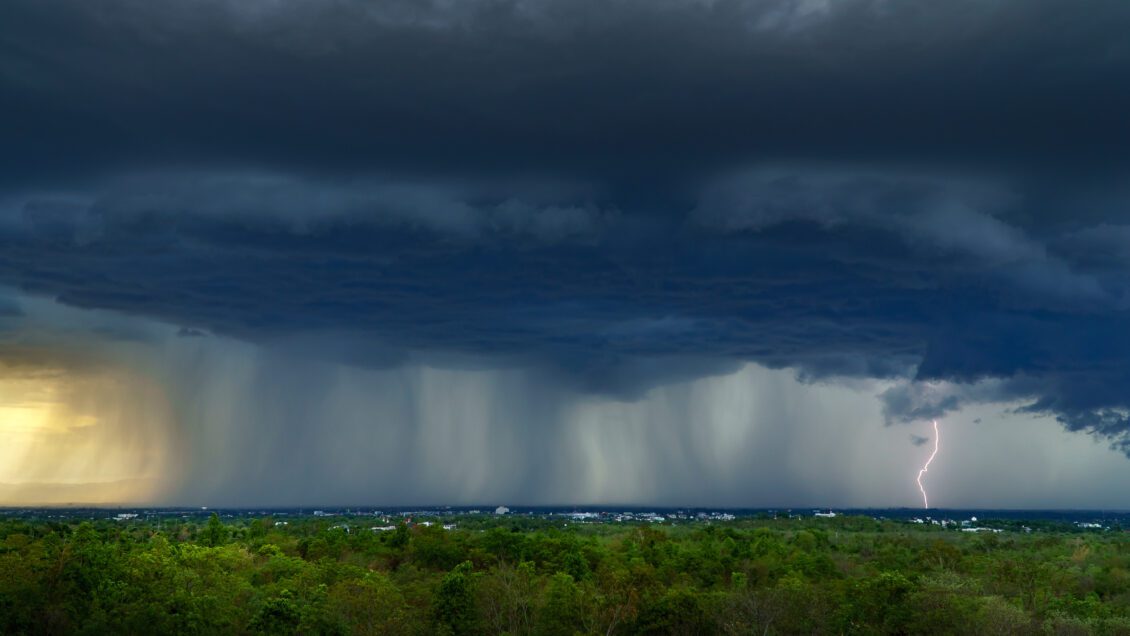March 3-9 is South Carolina Severe Weather and Flood Safety Week for 2024, as proclaimed by Governor Henry McMaster. The week is jointly sponsored by the South Carolina Emergency Management Division and the National Weather Service to remind people that severe storms, tornadoes and flash floods are significant hazards in South Carolina and proper safety precautions are necessary.
The best way to prepare for severe weather is to be informed, make a plan and build a kit. Plus, review the following information to know what to look for and what actions to take during severe weather.
Be Informed
- Know your area’s risk for severe weather and tornado. South Carolina is prone to different types of severe weather, including severe thunderstorms and tornadoes.
- Know the signs of a tornado, including a rotating, funnel-shaped cloud, an approaching cloud of debris, or a loud roar like a freight train.
- Sign up for CU Alerts, which provide emergency notifications to Clemson locations throughout the state. Clemson’s main campus also has sirens that will sound in the event of severe weather, including lightning, severe thunderstorms and tornadoes. The Emergency Alert System (EAS) and NOAA Weather Radios also provide emergency alerts.
- Have several ways to receive alerts and stay tuned to local TV and radio stations and the National Weather Service for the latest weather reports.
Make a Plan
- Create a family emergency plan and review and practice it at least twice a year. Visit Ready.gov/plan for a fillable form and things to consider when making your plan.
- Identify and practice going to a safe shelter. A small, interior, windowless room or basement on the lowest level of a sturdy building is the best place during a tornado.
- Plan for your pet. They are important members of your family so be sure to include them in your emergency plan.
Build a Kit
- Build a kit with enough supplies for several days, including emergency supplies, cleaning supplies, non-perishable foods, water, medical supplies and medication and pet supplies.
For a full list of items to consider, visit Ready.gov/kit.
Thunderstorms and Lightning
If you are under a thunderstorm warning:
- When thunder roars, go indoors! Move from outdoors into a building or car with a roof.
- Pay attention to alerts and warnings.
- Avoid using electronic devices connected to an electrical outlet.
- Avoid running water.
After the storm, pay attention to authorities and weather forecasts for information on whether it is safe to go outside, instructions regarding potential flash flooding and watch for fallen power lines and trees and report them immediately.
Tornadoes
If you are under a tornado or severe weather warning:
- Go to NOAA Weather Radio and your local news or official social media accounts for updated emergency information. Follow the instructions of state, local and tribal officials.
- Go to a safe shelter immediately, such as a safe room, basement, storm cellar or a small interior room on the lowest level of a sturdy building.
- Stay away from windows, doors, and outside walls.
- If driving, do not seek shelter under an overpass or bridge. You’re safer in a low, flat location.
- Watch out for flying debris that can cause injury or death.
- Use your arms to protect your head and neck.
- If you can’t stay at home, make plans to go to a public shelter.
For more information on how to stay safe before, during or after a tornado, visit Ready.gov/tornadoes or the South Carolina Emergency Management Division website.
Flooding
- Turn around, don’t drown! Do not walk, swim or drive through flooded roadways.
- Just six inches of fast-moving water can knock you down and one foot of moving water can sweep your vehicle away.
- Stay off bridges over fast-moving water.
- Know the location of dams in the area where you live and work and have a plan for potential impacts.

